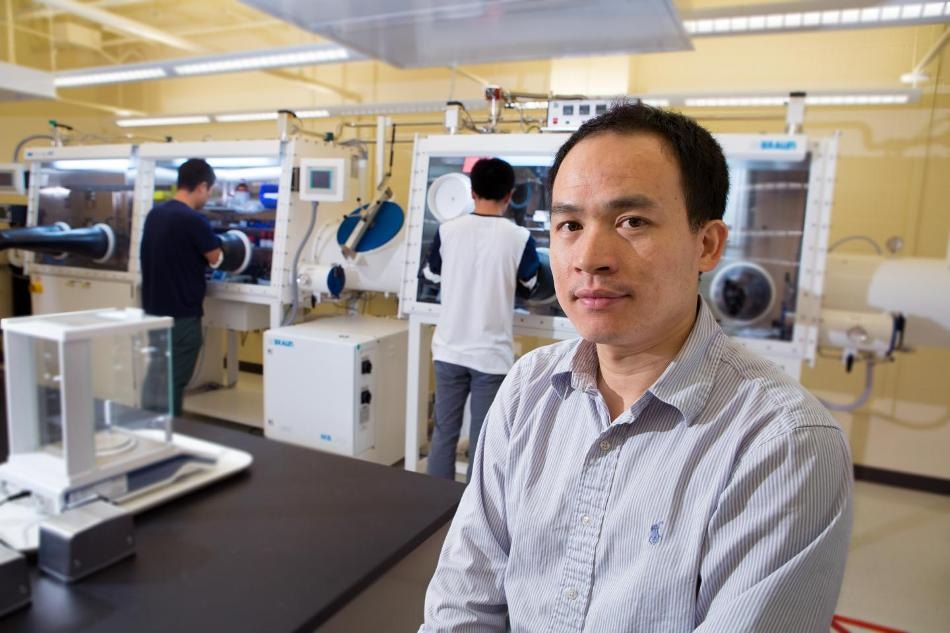Jan 5 2017
A team of researchers from Florida State University recently discovered a new crystal structure of organic-inorganic hybrid materials capable of making room for new applications for optoelectronic devices such as lasers and light-emitting diodes.
 Biwu Ma is an associate professor of chemical and biomedical engineering. (Credit: Bill Lax/Florida State University)
Biwu Ma is an associate professor of chemical and biomedical engineering. (Credit: Bill Lax/Florida State University)
The research was featured in the recent issue of the journal Nature Communications.
For the past few years, Biwu Ma, Associate Professor of Chemical and Biomedical Engineering, has been working with organometal halide perovskites, which are a particular class of crystalline materials, in order to build highly functioning optoelectronic devices. In this latest work, Ma’s team assembled inorganic and organic components to develop a one-dimensional structure.
The basic building block of this class of materials is the same, like a Lego piece, with which you can assemble different structures.
Ma
These Lego-like pieces, scientifically known as metal halide octahedral, are capable of forming 2D layers, 3D networks, or even 1D chains. While 2D and 3D structures have been extensively explored, 1D structures are rare. The team discovered a way to put these pieces together in a chain, put these pieces together in a chain, to develop a core-shell type wire. This is followed by piling together of millions of the organic-coated wires to form a crystalline bundle. These structures look like crystal needles from a distance.
This is for the very first time that scientists have observed these hybrid materials developing a crystal structure like this.
Ma stated that extremely interesting optical properties are displayed by this crystal. For instance, it is highly photo luminescent, which scientists can control moving forward as they use it for varied technologies.
In recent years, hybrid metal halide perovskites have received increased attention for their potential applications in different types of photon-related technologies such as lasers, LEDS and photovoltaic cells. This new research takes that work one step further by highlighting that this 1D structure could be another efficient form to produce bright light.
They are good light emitters. This research tells us we have the capabilities to develop new structures and these materials have great opportunities for practical applications for devices like LEDs or lasers.
Ma
Ma came to FSU as part of the Energy and Materials Strategic Initiative with the aim of producing high-tech materials for next generation, energy sustainable technology.
His work is supported by the Energy and Materials Initiative and collaborators at the FSU-based National High Magnetic Field Laboratory where some of the experiments were conducted.
Ma's co-authors on the paper are FSU professors Ronald Clark from the Department of Chemistry and Theo Siegrist from the FAMU-FSU College of Engineering; FSU research faculty Yan Xin and Lambertus van de Burgt; postdoctoral researcher Zhao Yuan; FSU graduate students Chenkun Zhou, Yu Tian, Yu Shu, Joshua Messier, Jamie Wang and Konstantinos Kountouriotis; and University of Florida Professor Kirk Schanze and UF graduate student Ethan Holt.